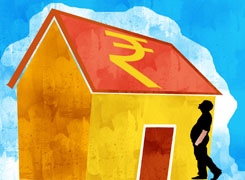Should I Start a SIP for Retirement?
Ramalingam Kalirajan |10902 Answers |Ask -Follow
Mutual Funds, Financial Planning Expert - Answered on Aug 13, 2024
He has an MBA in finance from the University of Madras and is a certified financial planner.
He is the director and chief financial planner at Holistic Investment, a Chennai-based firm that offers financial planning and wealth management advice.... more

Planning to start SIP for retirement corpus of 5 crores for a period of 10 years. Which mutual funds to start investing?
Understanding Your Retirement Goals
Before we delve into the types of mutual funds to invest in, it's essential to understand your retirement goals. You aim to build a corpus of Rs. 5 crores in 10 years. This requires an aggressive yet balanced investment strategy. The tenure of 10 years allows us to take calculated risks while maintaining a focus on wealth creation.
Your financial situation, risk appetite, and the existing financial commitments will play a significant role in deciding the best mutual fund categories for your portfolio.
Importance of Asset Allocation
A well-diversified portfolio is key to achieving your retirement goals. Asset allocation refers to the distribution of your investments across various asset classes, such as equities, debt, and hybrid funds. This helps in managing risk and optimizing returns.
Equity Funds: Given your long-term horizon, a significant portion of your SIP should be allocated to equity funds. Equities have historically delivered higher returns over the long term, which is crucial for wealth creation.
Debt Funds: To balance the risk, you should also consider investing in debt funds. These funds provide stability and act as a cushion against market volatility.
Hybrid Funds: These funds offer a mix of equity and debt. They can be a good option for investors who want to benefit from equity growth but also desire some level of protection.
Selecting the Right Equity Funds
Equity funds are the growth drivers in your portfolio. They offer the potential for high returns but come with a higher risk. Based on your goal, here’s how you can approach equity fund investments:
Large-Cap Funds: These funds invest in well-established companies with a strong track record. They provide stability and are less volatile than mid-cap or small-cap funds. Including large-cap funds in your SIP ensures a steady growth with comparatively lower risk.
Mid-Cap and Small-Cap Funds: These funds invest in mid-sized and smaller companies that have high growth potential. However, they are more volatile. A portion of your SIP can be allocated here for higher returns, but it's important to limit exposure based on your risk tolerance.
Multi-Cap and Flexi-Cap Funds: These funds invest across different market capitalizations. They offer diversification within equity itself, providing a balance between risk and return. They adapt to market conditions by switching between large, mid, and small-cap stocks.
Evaluating Debt Funds
Debt funds are vital for managing risk and ensuring stability in your portfolio. Here's how you can utilize them:
Short-Term Debt Funds: These funds are less sensitive to interest rate changes and provide consistent returns. They are ideal for reducing the overall portfolio risk while maintaining liquidity.
Corporate Bond Funds: These funds invest in high-rated corporate bonds. They offer higher returns than government securities but come with slightly higher risk. Including them in your SIP can enhance returns while keeping risk at a manageable level.
Gilt Funds: Gilt funds invest in government securities. They are virtually risk-free in terms of credit risk but can be volatile due to interest rate movements. They can be considered for the debt portion of your portfolio.
Hybrid Funds for Balanced Growth
Hybrid funds provide a blend of equity and debt, making them an excellent choice for a balanced approach:
Aggressive Hybrid Funds: These funds invest primarily in equities with a small portion in debt. They are suitable for investors who want to benefit from equity growth but also want some downside protection.
Balanced Advantage Funds: These funds dynamically manage the allocation between equity and debt based on market conditions. They offer flexibility and reduce the need for frequent portfolio rebalancing.
SIP Investment Strategy
To achieve your goal of Rs. 5 crores in 10 years, you need a disciplined and consistent SIP approach. Here's how to structure it:
Monthly Investment: Determine the monthly SIP amount required to reach your goal. Given the target and time horizon, your SIP should be substantial, considering the expected returns from your selected funds.
Regular Review and Rebalancing: It's crucial to review your portfolio regularly and rebalance it as needed. This ensures that your investments remain aligned with your goals, especially as you get closer to retirement.
Step-Up SIP: Consider increasing your SIP amount periodically as your income grows. This helps in accelerating the growth of your retirement corpus.
Monitoring and Adjusting Your Portfolio
Your financial journey is dynamic, and so should be your investment strategy. Regular monitoring of your portfolio's performance and making necessary adjustments is crucial.
Performance Tracking: Monitor the performance of your chosen funds against their benchmarks. If a fund consistently underperforms, consider switching to a better-performing fund.
Market Conditions: Stay informed about market trends and economic conditions. While long-term investing requires patience, being aware of major changes can help in making timely adjustments.
Risk Management: As you move closer to your retirement age, gradually shift your portfolio towards less risky assets. This helps in preserving the capital you've accumulated.
Role of a Certified Financial Planner
A Certified Financial Planner (CFP) plays a critical role in guiding you through your investment journey. A CFP can help you:
Customized Planning: Tailor your investment plan according to your unique financial situation and goals.
Objective Advice: Provide unbiased advice that focuses on your long-term benefits.
Holistic Approach: Consider all aspects of your financial life, including your retirement goals, risk appetite, and future financial needs.
Regular Updates: Keep you updated on any changes in the financial landscape that may affect your investment strategy.
Common Misconceptions
When planning for retirement through SIPs, several misconceptions might arise. It’s essential to address them:
Equity is Risky: While equities are indeed volatile, they are also the best wealth creators over the long term. The key is to remain invested and not panic during market downturns.
Debt Funds are Safe: While debt funds are less volatile, they are not risk-free. Interest rate changes can affect their performance. It's important to choose the right type of debt fund based on your risk profile.
Fixed Returns: SIPs do not guarantee fixed returns. They provide a disciplined way to invest in market-linked instruments, which can fluctuate based on market conditions.
Finally
Building a retirement corpus of Rs. 5 crores in 10 years is an ambitious yet achievable goal. The key lies in disciplined investing, selecting the right mix of mutual funds, and regular monitoring of your portfolio. A diversified portfolio, with a significant allocation to equities and a balanced exposure to debt, will help you reach your target.
Your journey towards a secure retirement starts with the right planning today. By staying committed to your SIPs and making informed decisions, you can confidently build the corpus you need to enjoy a comfortable retirement.
Best Regards,
K. Ramalingam, MBA, CFP,
Chief Financial Planner,
www.holisticinvestment.in
You may like to see similar questions and answers below
Omkeshwar Singh | Answer |Ask -Follow
Head, Rank MF - Answered on Apr 05, 2022
Ulhas Joshi |280 Answers |Ask -Follow
Mutual Fund Expert - Answered on May 29, 2023
Ramalingam Kalirajan |10902 Answers |Ask -Follow
Mutual Funds, Financial Planning Expert - Answered on Apr 30, 2024
Ramalingam Kalirajan |10902 Answers |Ask -Follow
Mutual Funds, Financial Planning Expert - Answered on May 11, 2024
Ramalingam Kalirajan |10902 Answers |Ask -Follow
Mutual Funds, Financial Planning Expert - Answered on Dec 02, 2024
Naveenn Kummar |236 Answers |Ask -Follow
Financial Planner, MF, Insurance Expert - Answered on Dec 18, 2025
Anu Krishna |1749 Answers |Ask -Follow
Relationships Expert, Mind Coach - Answered on Dec 17, 2025
Anu Krishna |1749 Answers |Ask -Follow
Relationships Expert, Mind Coach - Answered on Dec 17, 2025
Radheshyam Zanwar |6748 Answers |Ask -Follow
MHT-CET, IIT-JEE, NEET-UG Expert - Answered on Dec 17, 2025
Anu Krishna |1749 Answers |Ask -Follow
Relationships Expert, Mind Coach - Answered on Dec 17, 2025
Dr Shakeeb Ahmed Khan |184 Answers |Ask -Follow
Physiotherapist - Answered on Dec 17, 2025
T S Khurana |538 Answers |Ask -Follow
Tax Expert - Answered on Dec 17, 2025
T S Khurana |538 Answers |Ask -Follow
Tax Expert - Answered on Dec 17, 2025
Janak Patel |72 Answers |Ask -Follow
MF, PF Expert - Answered on Dec 17, 2025
Ramalingam Kalirajan |10902 Answers |Ask -Follow
Mutual Funds, Financial Planning Expert - Answered on Dec 17, 2025




























